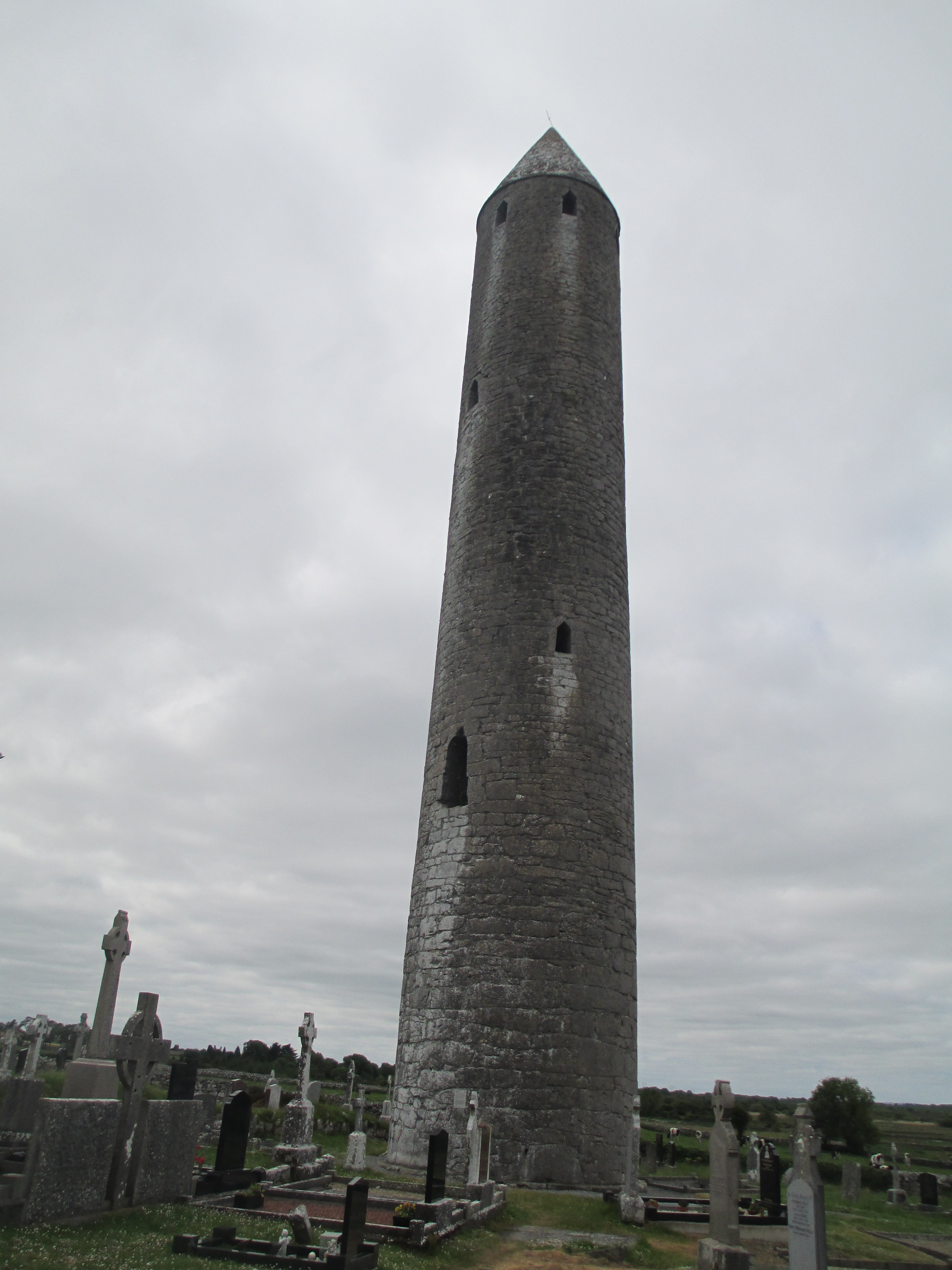
Boyle Abbey is in the town of Boyle, in County Roscommon in Ireland. I have written about it before as part of my Advent Calendar of Medieval Religious Institutions in 2017, you can see that post here. This post is going to go into more detail though.
Boyle Abbey is one of the many Cistercian abbeys in Ireland. I have written about the foundation of the Cistercian order, Bernard of Clairvaux and the spread of the Cistercian order in Ireland in this previous post about Mellifont Abbey, the first Cistercian abbey in Ireland. https://historicalragbag.com/2017/05/22/mellifont-abbey/
Suffice to say that the Cistercian order was founded on the concept of a life devoted to prayer, study and manual labour. It was a reaction against the more worldly and lavish monasticism that had risen out of the Benedictine monasteries, and the idea was a return to the original ideals of the Order of St Benedict. The Cistercian abbeys all followed a relatively similar layout and you can see how Boyle would have looked originally in the photo below.

Cistercian abbeys were intended to be self-sufficient, relying on fishing and farming to support their communities. Boyle Abbey, like most Cistercian foundations, relied on water and it lies on the banks of Boyle River. The water would have been used for drinking, running the mill and flushing drains. In Boyle, not all the monastic buildings remain even in ruin, as it was converted to a military barracks in the 16th century. You can see the walls and the gatehouse in photo below
There are treasures that survive at Boyle though, especially in the exquisite carvings in the church, but I’ll return to them a little later. To begin at the beginning.
The first monks arrived at Boyle Abbey in 1161. It was a daughter house of Mellifont Abbey which you can see in the photo below.
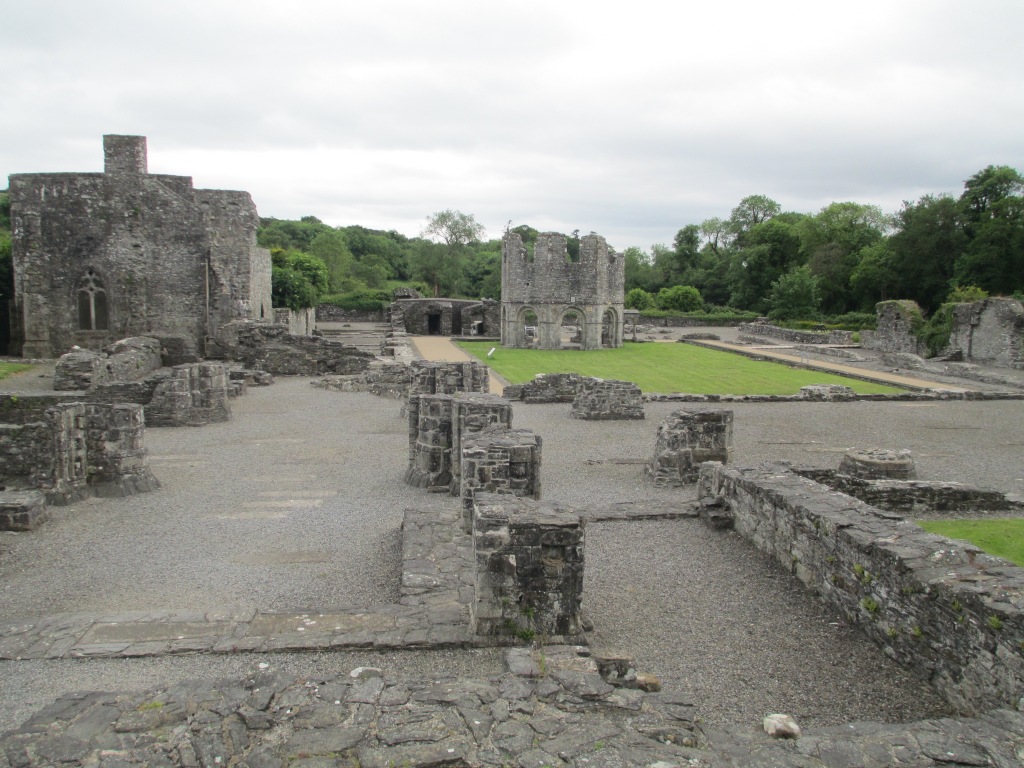
Abbeys were often founded by a specific person or family. For example Tintern Parva, also in Ireland, was founded by William Marshal in thanks for surviving a particularly rough crossing of the Irish Sea. You can see Tintern in the photo below.
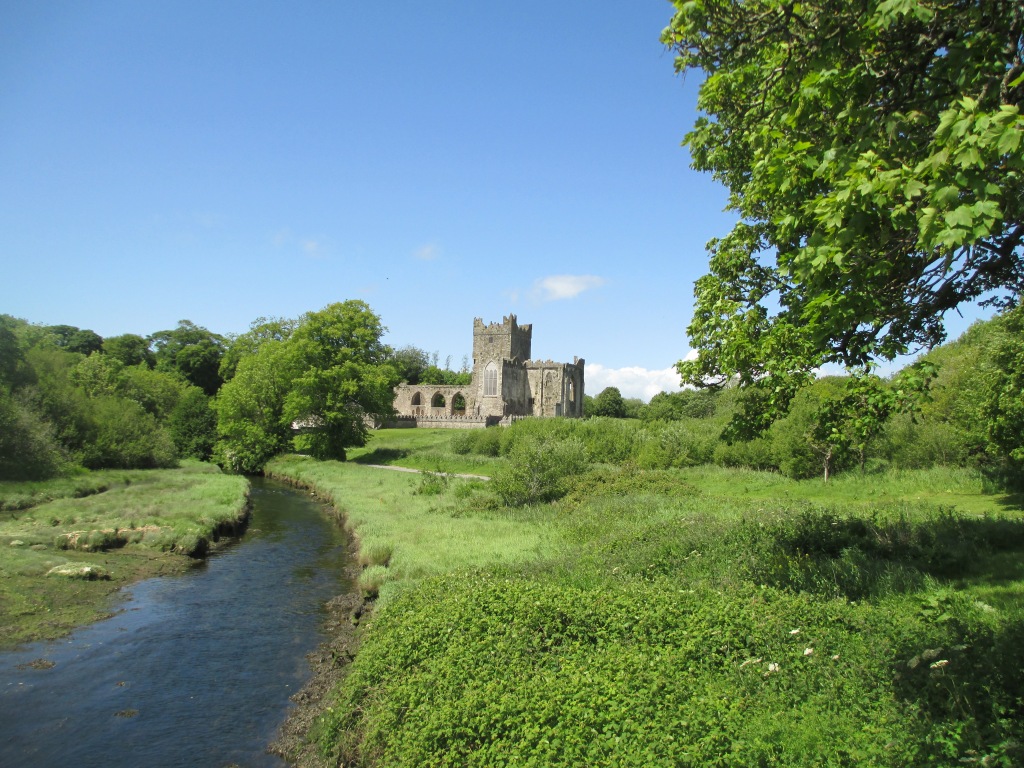
In the case of Boyle though, we don’t know who the founder was, if any, but the MacDermot Family who were Lords of Moylurg were patrons from early on in Boyle’s existence.
Once Boyle was founded in 1161 it maintained its self sufficiency, for the most part continuing as it always had through the years. There are a handful of times where it did step onto the centre stage. The first was in 1202 when the Anglo-Norman lord William de Burgh, who was in alliance with the King of Connacht, ransacked Boyle Abbey for three days. The Annals of Loch Ce described it as
They reached the monastery of Ath-da-larag on the Buill [Boyle Abbey], in which they fixed their residence; and they were three days in it, so that they polluted and defiled the entire monastery; and such was the extent of the defilement that the mercenaries of the army had the women in the hospital of the monks, and in every place in the entire monastery besides. No structure in the monastery was left without breaking and burning except the roofs of the houses alone; and even of these a great portion was broken and burned. No part of the buildings of the entire monastery was allowed to the monks and the brothers, excepting only the dormitory of the monks, and the house of the novices.
This was part of broader fighting both between the Anglo-Norman lords, who had arrived in Ireland in 1169 and began to claim large swathes of Ireland, John King of England and the Irish chieftains and kings. These depredations would have slowed down the construction of Boyle’s buildings as well, the church was still being built at this point. In fact Boyle was almost a perpetual construction site.
Boyle’s next moment in the limelight was when the Abbot was involved with the Conspiracy of Mellifont. This was part of a broader conflict between the Cistercian General Chapter in Clairveaux in France and the Cistercian abbeys in Ireland. The General Chapter believed that the Irish abbeys were answering only to Mellifont and were behaving not in accordance with the rule of the General Chapter. It’s perfectly possible that this didn’t mean that their conduct with problematic, more that they just weren’t directly under the control of the General Chapter as much as the General Chapter wanted. It was a conflict years in the making, but resulted in the General Chapter deposing five of the abbots of Irish Cistercian monasteries, including Boyle, and ensuring that they were answerable directly to the General Chapter in Clairveaux, taking Mellifont out of the chain of command. This conflict was also part of the even broader conflict between the native Irish and the Anglo-Norman world.
Unfortunately for Boyle this secondary conflict continued and it was caught in the middle more than once. In 1235 it was attacked by the English who, according to the Annals of Loch Ce
broke open the sacristy; and all its valuable things, and its mass-chalices and altar cloths, were taken of it.
Eventually reparations were paid.
Apart from being the site of a few prominent burials Boyle stayed out of centre stage until the Dissolution of the Monasteries. While Henry VIII’s Act of Suppression of the Monasteries was passed in 1534, it took some time for all the monasteries to be suppressed, especially remote sites like Boyle. So Boyle hung on until 1584 when it was finally dissolved and its abbot Abbot Glaisne O’Culleanain was executed in Dublin when he refused to renounce Rome. Boyle was leased to William Usher from 1589 until 1599 and then until the 18th century it was under military occupation, and was known as Boyle Castle. It came into the hands of the Commissioners of Public Works as a National Monument in 1892 and is today in the hands of the OPW.
Before it was restored in 20th century, Boyle was allowed to return somewhat to nature. You can see some etchings of it in the 1800s below.


So despite being a military fortification for over 300 years, a surprisingly large part of the Cistercian structure of Boyle remains. You can see some of the surviving structures in the photos below
The jewel in the crown at Boyle though is the church.
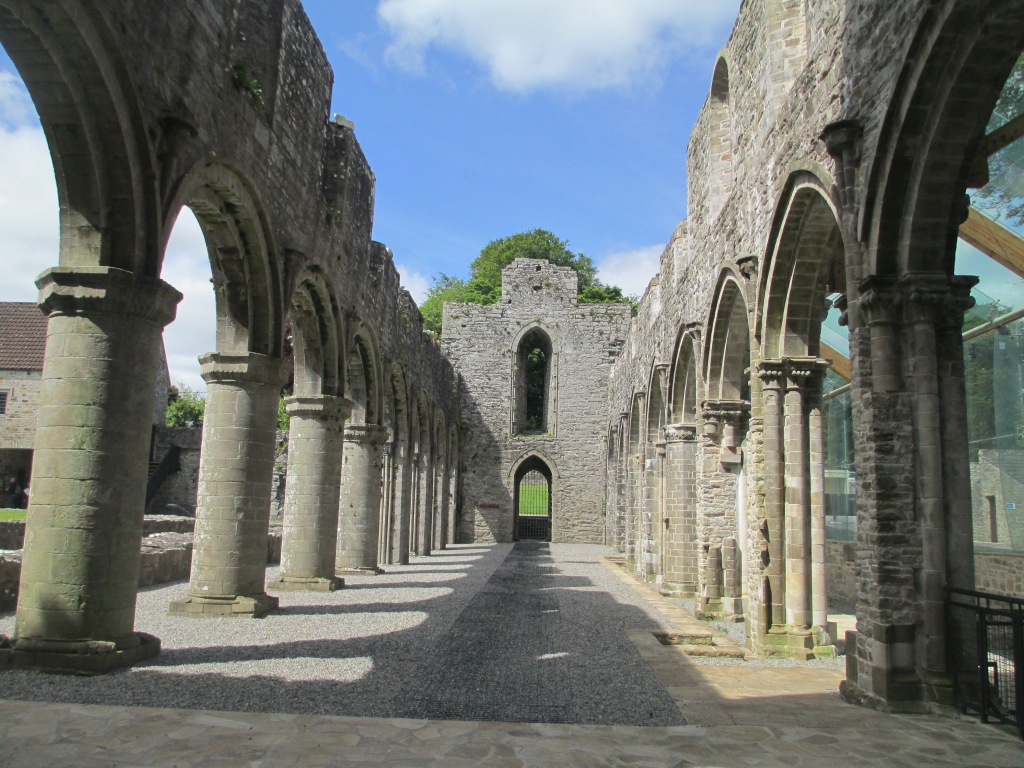

It is a truly remarkable survival and actually my reason for wanting to write about Boyle, because it has some incredible carvings. The church was built over a number of years, with sections begun with the foundation of the abbey in 1161 including the presbytery and the transepts, where the tower also began.

The church was not built quickly. Its construction was interrupted by things like raids from Anglo-Norman lords, but a building of its grandeur simply takes time to build. The church wasn’t consecrated until 1218, and even then it was most likely not entirely complete, you can see elements of both Romanesque and gothic, and an early adoption of more English styles, such as the tower. The earliest part dates to the late 12th century and the latest part, mainly the north piers, to the start of the 13th. It was added to as time went on as well, with much of the current tower dating to the 1300s. The really interesting thing about Boyle’s church is its grandeur. Cistercian churches were meant to be plain and austere, towers were frowned upon because they were considered extravagant and elaborate carvings and ornamentations were also not approved. Boyle’s church, however, adheres to none of these rules. Illustrating how the Irish Cistercian churches were separating themselves from the General Chapter of the Cistercian order which led to the Mellifont Conspiracy.
To return though, to the carvings I keep mentioning. When the church was complete, there were nearly 40 new capitals (the top part of a column) that needed to be decorated, and it is these decorations that survive today. Again, this was against Cistercian tradition. Most were adorned with floral motifs, which were fairly common at the time.


Others were decorated with animals and similar figures.



The most remarkable though is one that depicts little men

This carving, and some of the animals, was completely out of keeping with anything you’d find in any Cistercian church. This indicates the Irishness of these churches, and their separation from the rest of the Cistercian order. They also indicate the wealth and influence of Boyle Abbey, and apart from anything else they are just lovely.
These aren’t the only carvings to survive at Boyle, you can see some of the others that have become dislodged over the years in the small museum on site. These include a sundial- which you can see on the left.

Boyle Abbey represents much of Irish history, with its incursion from Anglo-Norman lords and the English, along with conflict with the broader Cistercian order. Boyle is part of a large network of Cistercian churches throughout Ireland, but it stands out for its size and grandeur and especially its carvings.
References:
Site visit 2015
Boyle Abbey OPW booklet
The Antiquities of Ireland Volume I Grosse
The Daily Telegraph Castles and Ancient Monuments of Ireland by Damien Noonan
https://archive.org/details/annalsoflochcc01hennuoft/page/n11/mode/2up
https://www.dhi.ac.uk/cistercians/abbeys/boyle.php
Smith, Brendan. “The Armagh-Clogher Dispute and the ‘Mellifont Conspiracy’: Diocesan Politics and Monastic Reform in Early Thirteenth Century Ireland.” Seanchas Ardmhacha: Journal of the Armagh Diocesan Historical Society, vol. 14, no. 2, 1991, pp. 26–38. JSTOR, http://www.jstor.org/stable/29742491. Accessed 5 Oct. 2020.
https://historicalragbag.com/2017/05/22/mellifont-abbey/
The photos are all mine.

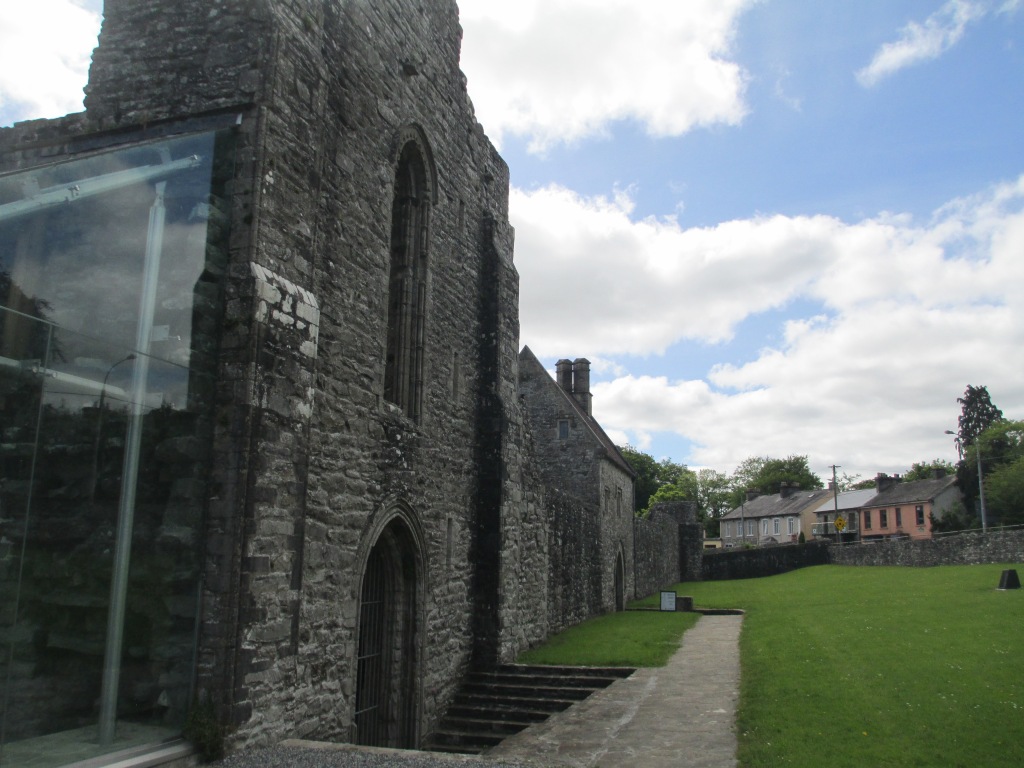















 The abbaye was founded roughly in 1060 by Matilda of Flanders the wife of William the Conqueror. It was consecrated in 1066 and was dedicated to the Holy Trinity. When Matilda died in 1083 she was buried in the abbaye and her tomb of black marble can still be seen today.
The abbaye was founded roughly in 1060 by Matilda of Flanders the wife of William the Conqueror. It was consecrated in 1066 and was dedicated to the Holy Trinity. When Matilda died in 1083 she was buried in the abbaye and her tomb of black marble can still be seen today.


 I have written about Fontevraud in Anjou France and it’s fascinating founder Robert of Arbrissel before.
I have written about Fontevraud in Anjou France and it’s fascinating founder Robert of Arbrissel before.

 Clonmacnoise in County Offaly was founded on the banks of the Shannon River by St. Ciaran in 544.
Clonmacnoise in County Offaly was founded on the banks of the Shannon River by St. Ciaran in 544.

 I have already written about Mellifont Abbey, which was the original Cistercian Abbey in Ireland, in much more detail. The post can be found here:
I have already written about Mellifont Abbey, which was the original Cistercian Abbey in Ireland, in much more detail. The post can be found here:
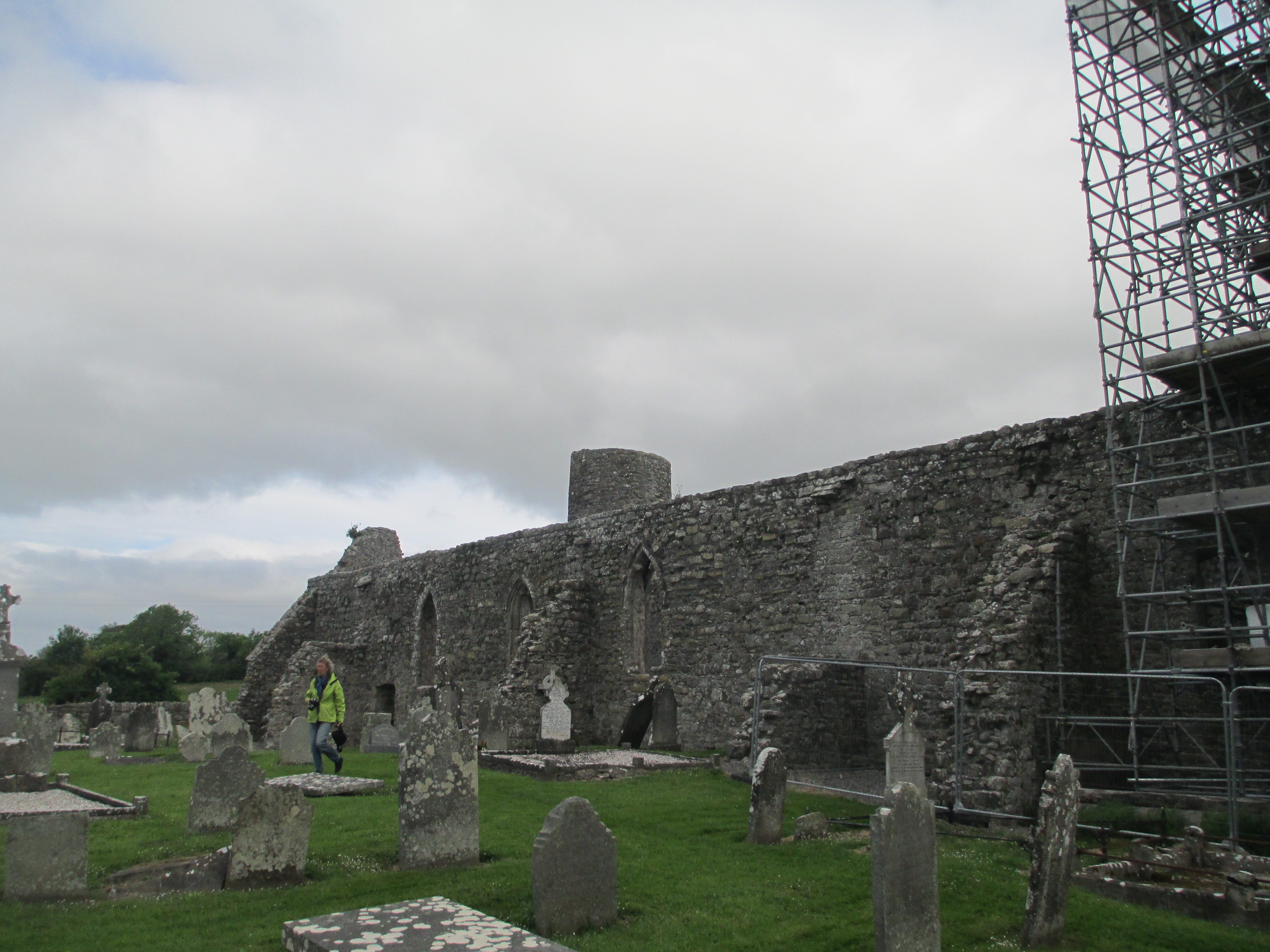
 The first monastery at Drumlane in County Cavan, Ireland was founded in the 6th century either by St Colmcille or St Maodhog. The main building remaining from the original monastery is the round tower the lower part of which dates to the 10th or 11th centuries. The upper levels, which are much less well built, date probably to the 15th century.
The first monastery at Drumlane in County Cavan, Ireland was founded in the 6th century either by St Colmcille or St Maodhog. The main building remaining from the original monastery is the round tower the lower part of which dates to the 10th or 11th centuries. The upper levels, which are much less well built, date probably to the 15th century.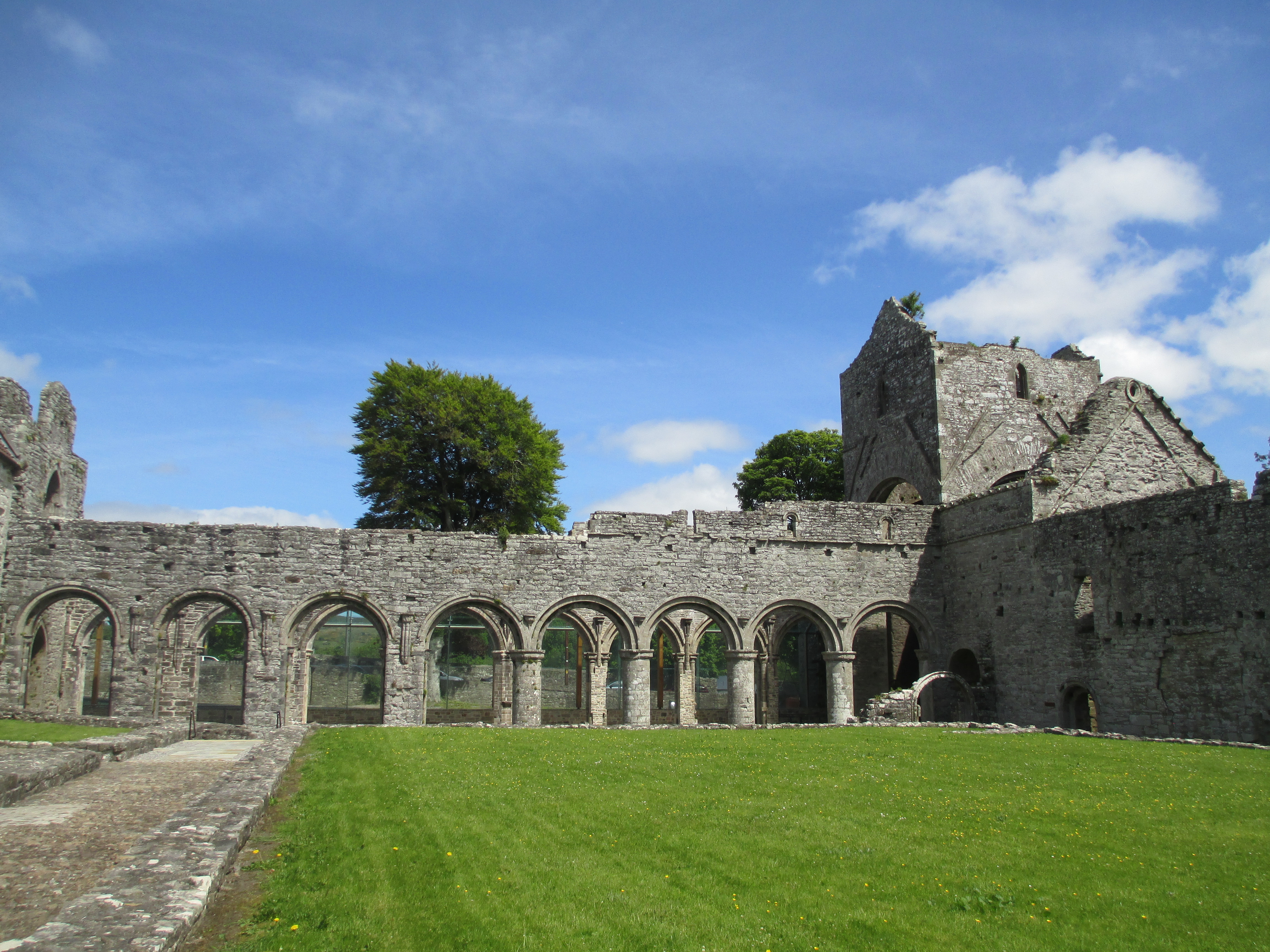

 Boyle Abbey in County Roscommon, Ireland was founded in 1161 with monks arriving from
Boyle Abbey in County Roscommon, Ireland was founded in 1161 with monks arriving from 
 Heynes abbey or Heynes church: It was built in the first half of the 13th century and was originally supported by intricate columns with flowers on them.
Heynes abbey or Heynes church: It was built in the first half of the 13th century and was originally supported by intricate columns with flowers on them.

 Our Lady’s church: A small 13th century church which might have been built with stone from an earlier church. You can see it second from the left in the above photo, I sadly don’t have a closer photo.
Our Lady’s church: A small 13th century church which might have been built with stone from an earlier church. You can see it second from the left in the above photo, I sadly don’t have a closer photo.
